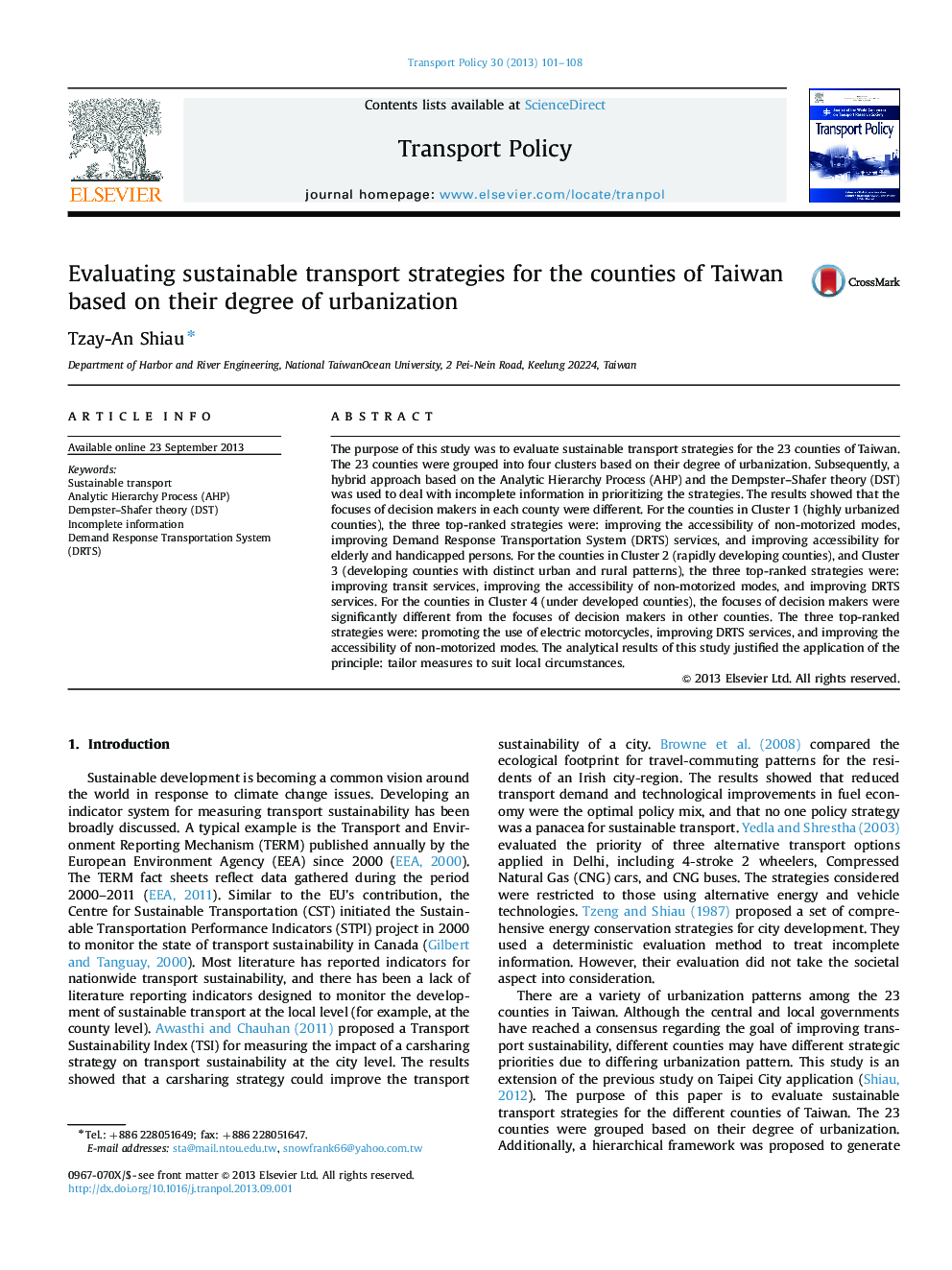| Article ID | Journal | Published Year | Pages | File Type |
|---|---|---|---|---|
| 7498087 | Transport Policy | 2013 | 8 Pages |
Abstract
The purpose of this study was to evaluate sustainable transport strategies for the 23 counties of Taiwan. The 23 counties were grouped into four clusters based on their degree of urbanization. Subsequently, a hybrid approach based on the Analytic Hierarchy Process (AHP) and the Dempster-Shafer theory (DST) was used to deal with incomplete information in prioritizing the strategies. The results showed that the focuses of decision makers in each county were different. For the counties in Cluster 1 (highly urbanized counties), the three top-ranked strategies were: improving the accessibility of non-motorized modes, improving Demand Response Transportation System (DRTS) services, and improving accessibility for elderly and handicapped persons. For the counties in Cluster 2 (rapidly developing counties), and Cluster 3 (developing counties with distinct urban and rural patterns), the three top-ranked strategies were: improving transit services, improving the accessibility of non-motorized modes, and improving DRTS services. For the counties in Cluster 4 (under developed counties), the focuses of decision makers were significantly different from the focuses of decision makers in other counties. The three top-ranked strategies were: promoting the use of electric motorcycles, improving DRTS services, and improving the accessibility of non-motorized modes. The analytical results of this study justified the application of the principle: tailor measures to suit local circumstances.
Related Topics
Social Sciences and Humanities
Social Sciences
Geography, Planning and Development
Authors
Tzay-An Shiau,
